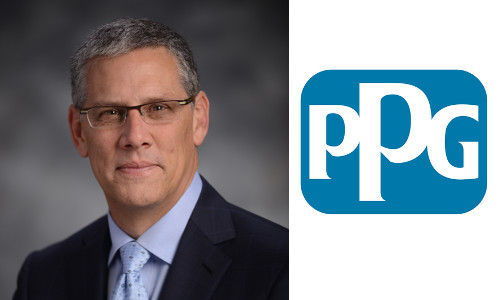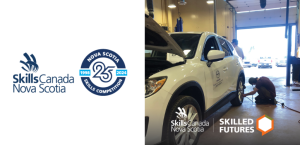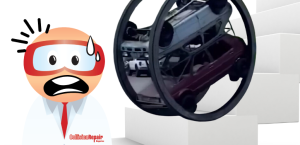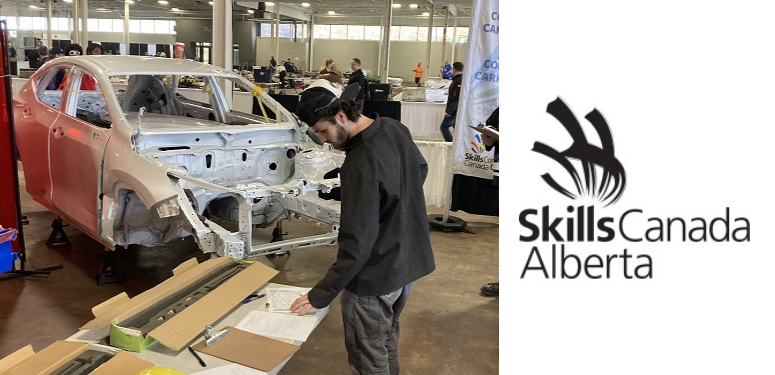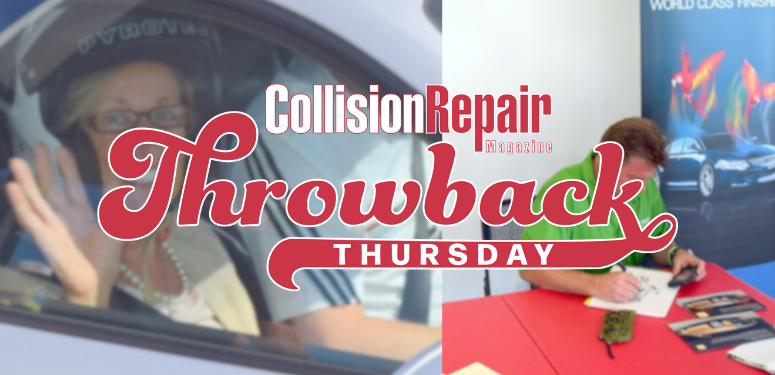By Jeff Sanford
Toronto, Ontario — November 21, 2017 — This week’s Tuesday Ticker: Analysts survey the alternative parts market, regulators probe the cause of the AkzoNobel fire in Saskatchewan, Uni-Select management discusses strategy, and much, much more!
Market prognosticators are worrying about a new “tone” in stock markets. In recent weeks early rallies have given way to sharp sell-offs by mid-morning. This has been the case over five recent trading sessions. Although market indexes are at record highs there are more shares declining in price rather than rising. This “divergence” in broad market direction is worrying to some. That is, analysts worry recent strong markets are weakening. Some wonder if a stronger sell-off lurks in the near future. Some investors seem intent on locking in the 20 percent gains that have accrued over the past year. This is especially true considering it doesn’t seem as if a tax cut will be passed by Congress. At the same time short-term interest rates are rising to levels closer to long-term rates. This so-called “flattening” of the yield curve is a good predictor of near-term recessions.
LKQ
Ryan Merkel, an analyst with brokerage firm William Blair, released a report recently on the major publicly-traded auto recycler and used parts retailer, LKQ. To generate the report the analyst spoke with several multi-site operators (MSOs) around the US. The analyst discussed industry trends with the collision repair centre owners. The results of the discussions made up the content of the recent report, the results of which will be interesting to anyone in the industry. Merkel’s report concludes that LKQ, firmly positioned as the dominant supplier of alternative collision parts, is the only supplier of used parts that has a national presence on the continent. This large scale allows the company to “win” on fill rates and cycle times. As a result analysts used the results of the survey to rate LKQ as an investment. The analysts talked over a whole range of collision repair industry trends with the MSOs. They discussed everything from directed repair programs (DRPs), to the threat of Amazon and the effect of new safety features on the industry. Beyond the investment thesis, the findings of the William Blair analysts are fascinating as a picture into the state of the industry. The key findings from the report include:
- “We learned that collision repair shops earn more margin using alternative parts versus OEM parts. This data point strengthens our thesis that [alternative parts utilization] in North America will rise above 40 percent during the next five years,” according to the analysts.
- MSOs agreed that driverless cars and advanced driver-assistance systems (ADAS) technology are far-off risks and blamed mild weather for weaker accident growth in recent years.
- Direct repair programs (DRPs) are entrenched as insurance companies have shed staff and operations. DRPs allow insurance companies to get cars fixed fast with lower repair costs.
- Consolidation of multi-shop operators (MSO) is a positive for LKQ because it helps drive organic growth (offset in part by better pricing for larger customers).
- “For the MSOs, we heard that labour is their biggest constraint to growth,” according to the report.
- General Motors is the only OEM making a real push to take shares back from alternative parts (using mypricelink.com). This initiative has been around for seven years with minimal success. We learned that auto body shops make better margins on alternative parts. OEMs may match the part price, but will not always match the margin.
- While some mechanics find OEM parts easier to work with and returns happen less often, the lower price of alternative parts combined with better margins (and usually better cycle times) for the garage are big barriers.
- “… Still, a few MSOs told us that OEMs are hungry to win share back. However, the OEMs have over 60 percent share, so cutting price hurts their margins. Also, OEMs have high costs because they touch auto parts three times. Gerber (owned by The Boyd Group) is moving to the TRUE Parts platform offered by CCC. This system shows realtime parts availability, pricing, and delivery times. We heard that AutoNation (the largest car dealership) is pushing new service and collision centers, trying to win back share from independent garages,” according to the story.
- [Large American parts retailer] AutoNation is also launching private-label parts and may in the future add collision parts.
- Many smaller shops still order collision parts using the phone. However, digital ordering is growing. According to the WIlliam Blair analysts, “We do not view a shift to digital ordering as a headwind because the repair shops have always looked at OEM parts and LKQ wins on price, fill rates, and delivery. In fact, we could argue that greater adoption of TRUE Parts is a positive trend for LKQ.”
- Smaller competitors have lower prices because they do not have the same number of parts in stock.
- Several repair shops said Amazon is unlikely to enter the collision parts market in North America. The view is that Amazon’s focus is on the [do-it-yourself] market.
- Amazon has no ability to procure recycled parts and aftermarket collision parts are bulky/expensive to ship.
- “According to the MSOs we spoke with, advanced driver-assistance systems, and autonomous driving are ‘overplayed risks’ to the collision market. There has been no notable impact to MSO revenues from these technologies. One contact said, ‘We see the impact as being very slow and gradual over a long period of time. We think market share gains and rising part prices can offset any accident shrinkage’,” according to the report.
As a result of these market dynamics, according to the William Blair report, LKQ is a top investment pick, “… we see room for shares to rise to $46, or 25 percent upside. We believe 2019 [earnings per share] of $2.40 is achievable assuming global organic growth of 5 percent to 6 percent and sizable [mergers and acquisitions]… Tailwinds include shift to younger car parc, rising [alternative parts usage] in both North America and Europe, and normal weather… Our rating is ‘Outperform’.”
GPC
Regulatory filings reveal that Toronto Dominion Bank upped its position in Genuine Parts Company (the parent of NAPA) 11.6 percent during the third quarter. According to recent filings with the Securities and Exchange Commission (SEC), the fund increased its stake in GPC to 55,720 shares after buying an additional 5,776 shares during the period. Toronto Dominion Bank’s holdings in Genuine Parts are now worth about $5,328,000 according to the SEC filings. Other funds that have added to their stake in GPC include the massive private equity firm, BlackRock Inc.which boosted its stake in GPC by almost 9 percent in a recent quarter. BlackRock now owns 15,716,092 shares of the auto part retailer’s stock. The position is now worth about $1,457,825,000. JPMorgan Chase & Co. also boosted its stake in GPC, increasing its holdings by 13.9 percent in the second quarter.
AkzoNobel
Fire investigators and staff at AkzoNobel Chemicals are still investigating the cause of last week’s fire at a chemical facility in Saskatoon. According to reports from the province emergency crews and a HAZMAT team responded to the blaze at the plant around 4:00 am last Monday. According to one report, “A plant operator told emergency crews a small fire started in a storage vessel, and a statement from AkzoNobel said on-site security first noticed the flames.”
Fire was coming from a vent stack when firefighters arrived… A 2,500-gallon tank containing a combustible liquid was attached to the vent, and the heat from the vent ignited roofing materials.” A source with the fire department said crews were familiar with the building when they arrived. As a plant that manufactures industrial chemicals, fuels and paints, the fire department had a plan in place for the facility. Damage is estimated at about $20,000.
Uni-Select
Quebec-based paint distributor Uni-Select last week released its financial results. Management held a conference call on Thursday to discuss the results. According to management goals at the company include a plan to cut $20 million from operating costs by 2020 and aggressively pursue growth at its FinishMaster brand. According to Henry Buckley, Uni-Select CEO, that growth will come from a sales push among jobbers to increase market share beyond the “… low 30 percent” of the market for paint, body and equipments supplies that the company currently commands. Growth fell in the third quarter as a result of Hurricane Irma and Harvey. As well,
FinishMaster has suffered muted earnings as it went through a BASF product line changeover, but those headwinds will give way in the final months of this year and will be a “nonfactor” in 2018. Company executives also said they thought recent market softness which was “starting to subside.” The program to reduce costs by $20 million is part of the Uni-Select “20/20 Initiative” that was announced during the call.
PPG
Well-known stock commentator James Cramer interviewed Michael McGarry, president and CEO of PPG Industries, on his popular cable show this past week. Cramer asked about the 20 percent jump in the price of PPG shares this year. According to McGarry said a number of variables are driving business at the massive global paint maker. New environmental regulations in China has allowed PPG to grab market share in that country in the water-based coatings sector. PPG is also enjoying an increase in employment in the US said McGarry. According to the CEP, “… more employment translates to more traffic congestion which, sadly, results in more collisions and the need to repaint more cars.”
Boyd
Boyd continues to garner attention among investors. A recent report targeted retail investors the Winnipeg-based company is described as, “… one the largest operators of collision repair shops in North America with locations across five Canadian provinces and over 20 US states.” The report goes on to note that the, “… North American collision repair space is still quite fragmented, and there’s a gigantic opportunity for Boyd to consolidate this space, in which they’ve done an incredible job of so far.” The income fund only pays out a tiny 0.56 percent yield. But the distributions from the fund are not the reason investors have been interested in this security. The company keeps earnings in the organization and is using money earned to consolidate the industry and buy up shops. By investing its money in acquisitions the company has grown revenues rapidly. That has led to big capital gains at the company (that is, the price of units in the fund have been rising rapidly). Rather than enjoy large distributions from the fund, investors have benefited from an amazing increase in the value of Boyd units of about, “… 526 percent over the past five years.” According to the investment analyst, “Those are some really impressive returns, mostly because Boyd is incredibly efficient at driving earnings from the acquisitions it makes… Going forward, Boyd is expecting to double in size from 2015 to 2020 on a constant-currency basis. That means many more deals on the horizon, and the announcement of each one is likely to result in a nice sustained rally… As long as accidents happen, Boyd will profit.” No wonder then this past week it was announced that Boyd Group Income Fund had its target price hoisted by Royal Bank Of Canada from CDN $101.00 to CDN $103.00 in a research note issued to investors on Thursday. Royal Bank Of Canada currently has a sector perform rating on the stock.



